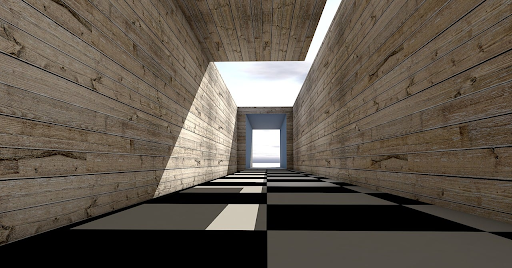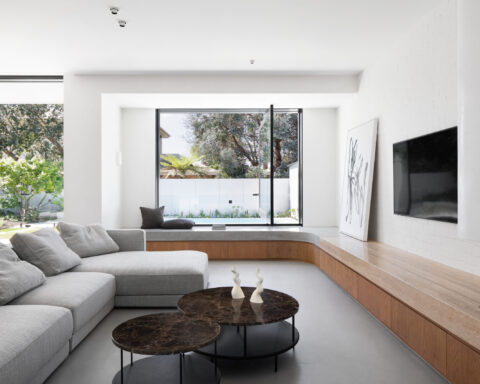Picture this: you’re standing in the middle of your dream home, admiring the sunlight streaming through floor-to-ceiling windows, running your hand along sleek countertops, and feeling the spaciousness of open-concept living. Imagine experiencing all of this before a single brick has been laid. Welcome to the world of modern architectural 3D rendering!
Gone are the days when architects relied solely on hand-drawn sketches and 2D blueprints to bring their visions to life. Today, we’re witnessing a revolution in architecture, where cutting-edge technology allows us to step into fully realized virtual spaces long before construction begins. This leap from flat drawings to immersive 3D experiences has transformed how we conceptualize, design, and sell architectural projects.
But what exactly is architectural 3D rendering, and why has it become such a game-changer in the industry? Buckle up, folks – we’re about to dive deeply into this fascinating world where creativity meets technology and dreams become (virtual) reality!
The Importance of Architectural 3D Rendering in Modern Design
Let’s face it – not everyone can look at a set of blueprints and instantly visualize a finished building. That’s where architectural 3D rendering comes in, bridging the gap between imagination and reality. It’s like having a crystal ball that shows you the future of your project!
But why is this technology so crucial in today’s architectural landscape? Well, for starters, it’s a communication superhero. Architects can now present their ideas with stunning clarity, allowing clients to truly see and feel the space before it exists. No more crossed wires or misunderstandings – what you see is (virtually) what you get!
Moreover, 3D rendering has become an invaluable tool for decision-making. Want to see how that accent wall looks in deep blue instead of beige? Curious about how different lighting fixtures affect the ambiance? With a few clicks, these changes can be visualized in real-time, saving countless hours of back-and-forth and potentially avoiding costly mistakes down the line.
However, perhaps the most exciting aspect of architectural 3D rendering is how it pushes the boundaries of creativity. Architects can now experiment with bold designs and innovative concepts, testing their feasibility in a virtual environment before committing to construction. It’s like having a playground for architectural imagination!
Types of Architectural 3D Rendering Services
Now that we’ve established why 3D rendering is such a big deal let’s explore the array of services available in this digital wonderland. Trust me, there’s something for every taste and need!
- Exterior rendering: This is the bread and butter of architectural visualization. It’s all about creating photorealistic images of a building’s exterior, showcasing how it fits into its surroundings and catches the light at different times of day. Whether it’s a cozy family home or a towering skyscraper, exterior rendering brings facades to life.
- Interior rendering: Step inside and let your imagination run wild! Interior rendering allows you to visualize every nook and cranny of space, from furniture placement to material textures. It’s like taking a virtual tour of your future home or office.
- Virtual tours: Speaking of tours, why stop at static images? Virtual tours take things up a notch, allowing you to walk through a 3D space as if you were really there. It’s an immersive, valuable experience for real estate marketing or showcasing large-scale projects.
- Aerial view renderings: Get a bird’s-eye view of your project with aerial renderings. These are fantastic for understanding how a building fits into its wider context or for master planning large developments.
- 3D floor plans: Say goodbye to flat, confusing floor plans! 3D floor plans offer a clear, intuitive view of spatial relationships and flow within a building. They’re especially helpful for those who struggle to interpret traditional 2D plans.
But wait, there’s more! The world of architectural 3D walkthrough animation has opened up even more exciting possibilities. Imagine gliding through a building, watching as day turns to night, or seeing how people might interact with the space. It’s like directing your architectural movie!
The Role of Technology in 3D Architectural Rendering
Now, let’s geek out momentarily and talk about the tech that makes all this magic happen. Because, let’s be honest, behind every stunning 3D rendering is a powerhouse of software and hardware working overtime.
At the heart of most 3D rendering projects, you’ll find software giants like Autodesk 3Ds Max and V-Ray. These bad boys are the Swiss Army knives of the 3D world, capable of creating everything from basic models to mind-blowingly realistic scenes. But they’re just the tip of the iceberg. There’s a whole ecosystem of specialized tools out there, each bringing something unique to the table.
For instance, SketchUp is a favorite for quick conceptual modeling, while Lumion excels at adding life and movement to scenes. And let’s not forget about Unreal Engine – the same one used in video games – which is increasingly being adopted for its real-time rendering capabilities. It’s like having a render farm at your fingertips!
But software is only half the story. You need some serious hardware muscle to bring these digital dreams to life. We’re talking high-performance GPUs, mountains of RAM, and processors that could probably launch a rocket (if they weren’t busy rendering your future kitchen). The better the hardware, the faster and more detailed the renders can be.
And here’s where it gets really exciting: With the rise of cloud computing, even small architectural firms can access the rendering power that was once the domain of big studios. This is democratizing the field, allowing more architects to create stunning visualizations without breaking the bank.
Benefits of 3D Rendering for Architects and Clients
Alright, let’s talk perks! Trust me, the benefits of 3D rendering are as plentiful as the pixels in a high-res image.
For architects, 3D rendering is like having a superpower. It allows them to clearly communicate their vision, reducing the risk of misunderstandings and ensuring everyone’s on the same page. No more clients saying, “Oh, I didn’t realize it would look like that!” halfway through construction.
But it’s not just about pretty pictures. 3D rendering can actually streamline the entire design process. Architects can quickly test out different design options, materials, and lighting scenarios, making informed decisions long before construction begins. It’s like having a time machine that lets you see the future and adjust it as needed!
And let’s talk about winning those pitches. A stunning 3D visualization can be the difference between landing a project and watching it disappear. It’s not just about impressing clients (although that’s a big part of it). Detailed 3D renderings can also help secure funding by giving investors a clear picture of what they’re putting their money into.
Now, from the client’s perspective, the benefits are equally exciting. 3D architectural walkthrough services allow clients to experience their future space virtually, helping them make more confident decisions. They can spot potential issues early, request changes, and truly understand what they’re getting before a single brick is laid.
This level of clarity and involvement can lead to higher client satisfaction and fewer costly changes during construction. It’s a win-win situation that can save both time and money in the long run.
Challenges and Limitations of Architectural 3D Rendering
Now, I know what you’re thinking – this all sounds too good to be true! And while 3D rendering is incredible, it’s not without challenges. Let’s keep it accurate and discuss some hurdles in this digital paradise.
First up: cost. High-quality 3D renderings, especially those created by a top-notch 3D walkthrough animation company, don’t come cheap. The software is expensive, the hardware needs constant upgrading, and the skills required to create genuinely stunning visuals take years to develop. For smaller firms or individual architects, this can be a significant barrier to entry.
Then there’s the time factor. While 3D rendering can save time in the long run, creating detailed, photorealistic renderings can be time-consuming. For complex scenes, we’re talking hours or even days. This can be a challenge in a fast-paced industry where time is money.
Another limitation is the need for skilled personnel. Operating 3D rendering software isn’t like using Microsoft Paint (remember that?). It requires a unique blend of technical know-how and artistic skill. Finding and retaining talent in this field can be challenging, especially for smaller firms.
Let’s not forget about the potential for misrepresentation. While 3D renderings aim to be as accurate as possible, they’re still representations, not reality. If renderings are overly idealized or if clients don’t understand the limitations of the medium, there’s always a risk of creating unrealistic expectations.
Lastly, there’s the ever-present risk of technology dependence. What happens when the software crashes right before a big presentation? Or when a critical update breaks compatibility with your existing files? These are the kinds of headaches that keep 3D artists up at night.
Future Trends in 3D Architectural Rendering
Hold onto your hard hats, folks, because the future of architectural 3D rendering is looking brighter than a perfectly lit 3D scene!
One of the most exciting trends on the horizon is the integration of Artificial Intelligence into the rendering process. Imagine software that can learn your design preferences, automatically generate multiple design options, or even predict potential issues in your plans. It’s like having a tireless digital assistant that works 24/7 to bring your architectural visions to life.
Virtual and Augmented Reality are also set to revolutionize how we experience 3D renderings. Instead of looking at a screen, clients could don a VR headset and walk through their future home, reaching out to touch (virtual) surfaces and experience spaces in a whole new way. 3D animation walkthrough services will likely become more immersive and interactive than ever.
Cloud computing is another game-changer. As internet speeds increase and cloud technology improves, we’re moving towards a future where real-time, collaborative 3D rendering becomes the norm. Architects worldwide could work on the same 3D model simultaneously, making changes and seeing updates in real time.
And let’s not forget about sustainability. 3D rendering will be crucial in designing and visualizing green buildings as the world becomes more eco-conscious. We might see software that can simulate a building’s energy performance or show how it interacts with its environment over decades.
The line between the virtual and real world is blurring, and architectural 3D rendering is at the forefront of this exciting frontier. Who knows? In a few years, we might be designing buildings in the metaverse!
Conclusion
As we wrap up our journey through the world of architectural 3D rendering, one thing is clear: this technology is not just changing the game – it’s creating a whole new playing field.
From bringing dreams to life with stunning visualizations to streamlining the design process and enhancing communication, 3D rendering has become an indispensable tool in modern architecture. It’s breaking down barriers between imagination and reality, allowing us to explore and refine ideas in ways that were once impossible.
Sure, there are challenges to overcome and limitations to consider. But the benefits and opportunities far outweigh these hurdles. As technology continues to evolve, we can only imagine the incredible possibilities that lie ahead.
So, whether you’re an architect looking to elevate your designs, a client dreaming of your perfect space, or just someone fascinated by the intersection of technology and creativity, the world of 3D architectural walkthrough services has something exciting to offer you. It’s not just about creating buildings – it’s about shaping the future of how we imagine, design, and interact with the spaces around us.
The future of architecture is here, and it’s rendered in stunning 3D. Are you ready to step into it?
Author:
Aimee S. Marshall
Aimee is a seasoned digital artist and design enthusiast who is passionate about creating stunning visuals. With over a decade of experience in 3D rendering and design, she has worked on projects spanning various industries, from architecture and interior design to product visualization and advertising. Aimee shares her expertise and insights through writing, mentoring, and speaking engagements, aiming to inspire others in the dynamic world of 3D rendering and design.
Keep an eye for more latest news & updates on Essential Tribune!








